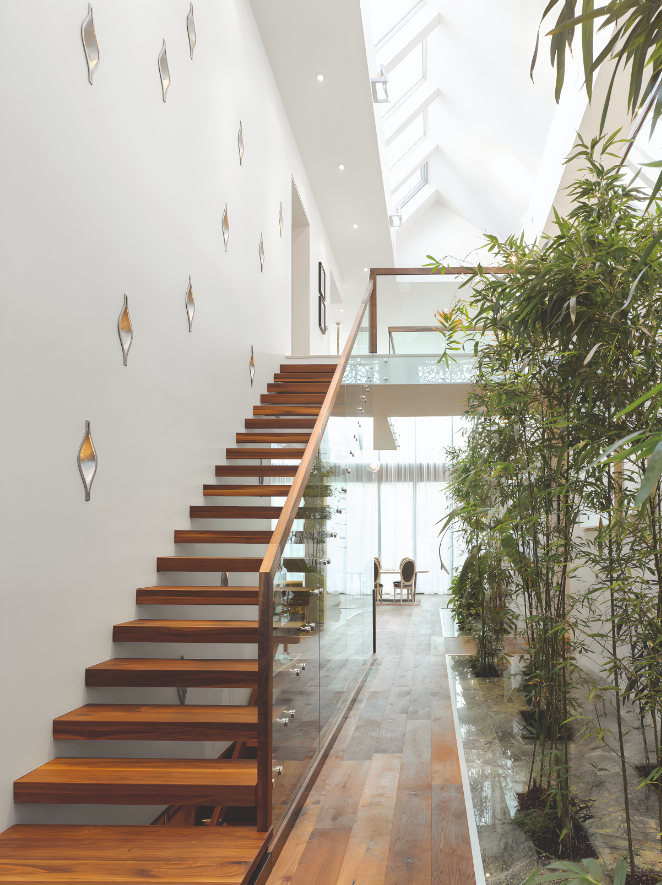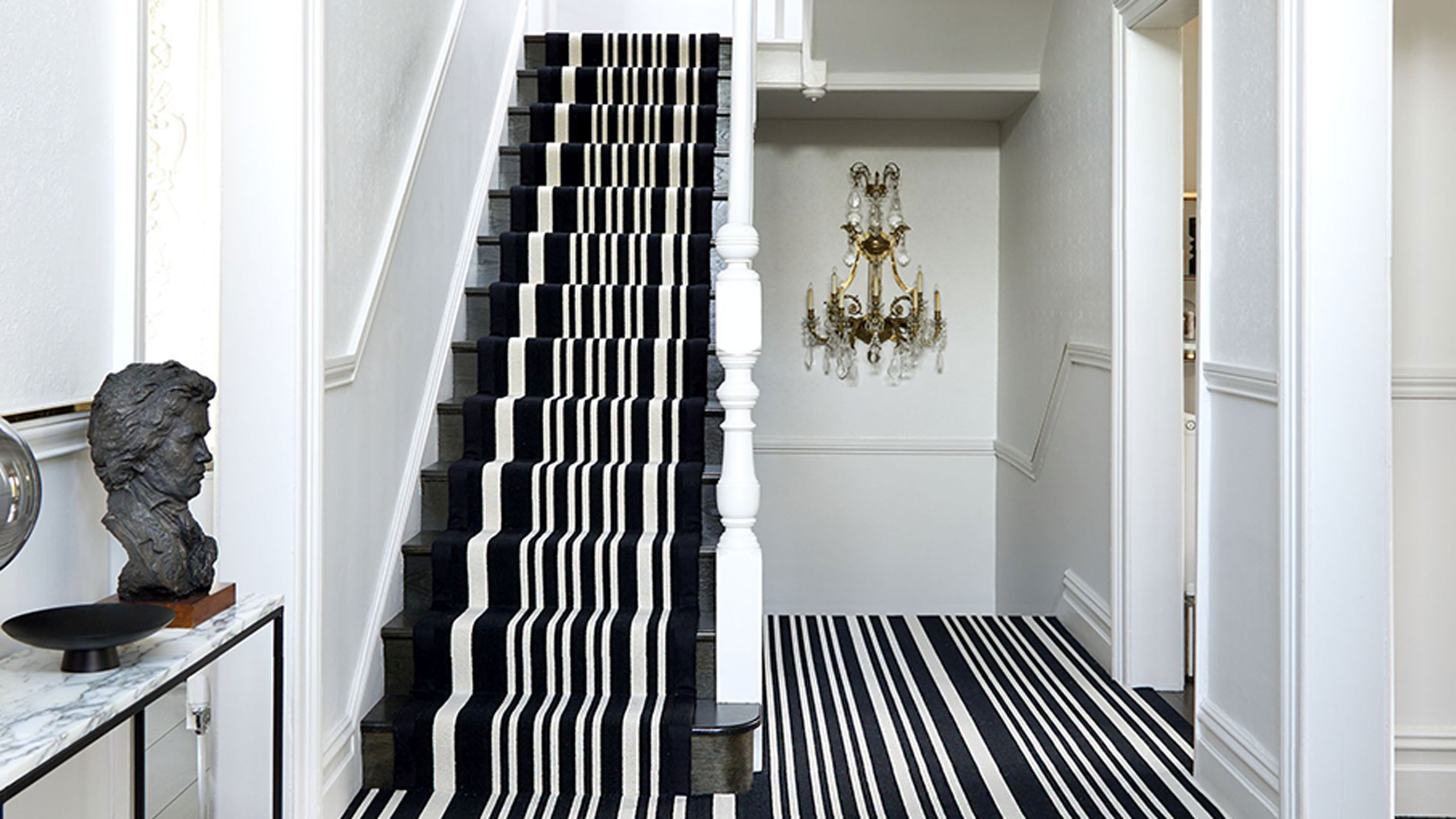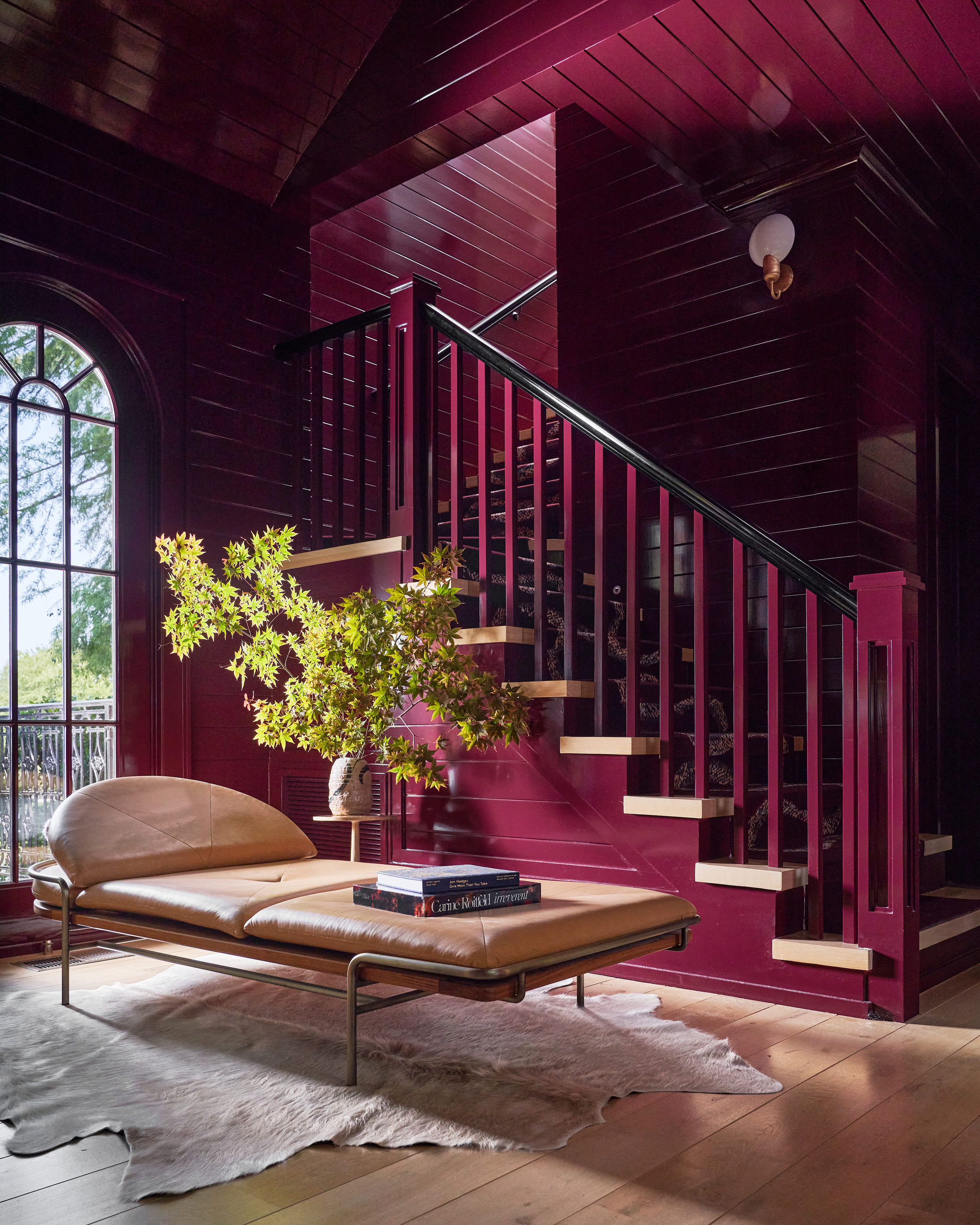
With summer around the corner giving your wooden stairs a much needed refresh may be on the agenda. Dull, worn out stairs are bound to drag down the vibrancy of your home, making it look less lively and awake and more in the mood for early hibernation.
So, what’s the best way to approach freshening up your footfall, especially as a beginner? Whether you’re working with an airy birch, the rich tones of mahogany or a traditional oak, there are procedures you can follow to ensure that sprucing those steps leads to a job well done.
We asked painting experts and interior designers to share their top tips and tricks for painting your wooden staircase. From advice on which paints to use and notes on safety, to an analysis of why wooden staircases are a popular choice in the first place, you’re sure to become an expert yourself after hearing what they have to say.
Why are wooden stairs a popular choice in people’s homes?

In the contemporary world, an increasing number of home-owners are falling victim to decision fatigue after falling out of love with their flooring. The options out there today are endless: carpet, concrete, tile… figuring out where to even begin when considering such an important aspect of the home can be tough.
Now enter the option of wood: easy to clean, comes in a variety of colors, and is definitely destined to bring a cozy vibe into a person’s space. It’s a no-brainer why wooden staircases have become such a popular choice both in their own right or as a feature piece within an interior. Better yet, painted staircases are a great way to add a pop of color to turn this functional space into a real feature.
‘This year, we have noticed people rejecting anything clinical or cold in pursuit of warm, cozy palettes,’ says Neel Bradham, CEO of Parador. ‘From beautiful oaks and deep walnuts to light ash, the wood look brings an elegant, organic feel to a space, adding texture and interest to an interior whilst remaining neutral. Beiges, medium browns, and dark chocolatey woods will reign for our floors in the coming year.’
Neel continues to describe how wood flooring can bring an added sense of timeless tranquility to our day-to-day living. ‘The natural hues of wood incorporate the outside world into our homes, offering a grounded and calm foundation,' he says.
Why do people choose wooden stairs over carpets?

In terms of practicality, wooden stairs offer an array of advantages against their carpeted counterpart, making the competition between the two materials quickly cease.
‘Wooden stairs typically have more longevity than carpet, and they wear better over time,’ says Stephanie Lindsey, Interior Designer at the Etch Design Group. This makes the material a prime choice for staircases, an area that will be subjected to constant use from the wear of shoes, pets, and possibly running children!
Neel echoes Stephanie’s point, remarking on the notable balance achieved between wooden stairs’ ability to look making a staircase look better while simultaneously remaining functional. ‘Beautifully combining functionality with style, wooden flooring is a great option for high-traffic areas of the home such as staircases, kitchens, and bathrooms,’ says Neel.
You can also say goodbye to carpet cleaners and shampoos with the addition of wooden flooring in your home (unless you opt for a runner!). Wooden stairs can be upkept by simply wiping the surface down with a damp cloth and vacuuming up any excess crumbs or dirt. The steps can then be buffed with a dry cloth and shining product if a person wishes to further refresh the area.
How to paint wooden stairs
1. Design on a design

Before your stairs are prepped, take time to consider what parts of the stairs you wish to paint. Although, as noted by interior designer, Elana Mendelson, ‘hardwood stairs can withstand significantly more wear, tear and spills without needing to be replaced like carpet’. The paint you use will still be subjected to wear, likely more visible than the wear of the wood underneath.
For this reason, many people opt to just paint part of their steps. ‘Most commonly we see the risers painted, not the treads where people’s feet go,’ says Stephanie. ‘Doing this gives a staircase more character and distinguishing features, such as a pop of color.’
Elana seconds this. ‘People may opt to paint their stairs to elevate a focal point of their space,' she says. 'It's a big bang for the buck and can give a home an entirely new, updated look.’
2. Start the prep work

Similar to how to paint a room, half of the job is in the prep work. Like any area about to be painted, the best place to start is giving it a good wipe-down. If your stairs are already made of wood, vacuuming each step then going over them with a damp cloth is a good approach to ensure a clean surface before drying and painting.
However, if your stairs need more of an overhaul, such as carpet removal prior to painting, make sure to approach this in a methodical way and do your research. Pulling at the carpet with all your might may leave sticky adhesive stains on the wood underneath, making it harder to paint.
After cleaning the stairs free from dirt or debris comes sanding and priming the area. ‘It’s recommended to sand the stairs to make a better surface for the paint,’ says Anthony Kulikowski, Owner of Five Stair Painting (a Neighborly Company).
3. Paint the stairs, step by step

‘Start by priming the stairs with a high-quality and durable primer specific for wooden surfaces,' says Anthony. The same level of durability is required for the wood-specific paint you plan to use, needing to be durable enough to withstand years of foot traffic. ‘Water-based alkyds are a great solution for long-term durability, being both high quality and durable against high traffic,' he says. This paint can be applied with either brushes or rollers.
It’s recommended to invest in a roll of painter’s tape to put along the edges of your steps while working. Doing so helps to prevent paint from getting on any unwanted surfaces. If the idea of painting all of your steps at once feels daunting, Anthony suggests painting every other step of the case. This way, you can still get up and down the stairs, skipping over the painted steps while they dry.
Drying time can depend on a number of external factors, from household temperature to time of the year. 'Budget about two to three hours before allowing the stairs to be walked on lightly, and one to two days before resuming heavy use,' Anthony recommends.
And lastly, for those wondering if painted steps will create a slippery surface, they don’t necessarily have to! ‘Painting wooden stairs has the potential to make the surface more slippery, but there are ways to prevent that,’ says Anthony. ‘When choosing paint, look out for ones that have non-slip additives in them and try to avoid extremely glossy finishes. You may also add handrails and runners to make them less slippery, or a product such as Shark Grip which creates slip resistance on painted surfaces.’







